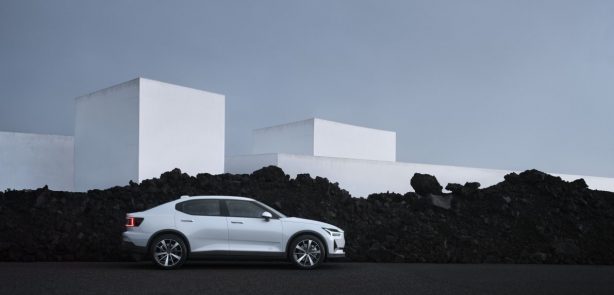Think electric cars and right away Tesla springs to mind. The American electric car manufacturer’s models are synonymous with cool tech and supercar-beating acceleration. Its best seller, the Model 3 sedan, is the most affordable model. While it plays in the luxury sports sedan segment, rivalling the likes of BMW 3 Series and Mercedes-Benz C-Class, there isn’t really another full electric player in that class. This means the Tesla Model 3 has no direct rival. Until now.
Polestar, the electrified sub-brand of Swedish luxury car brand Volvo, is making an entry to the Australian EV market with the Polestar 2 electric sedan. And it’s set its crosshair squarely on the Tesla Model 3.
Priced to rival the Tesla, the Polestar 2 range starts from $59,900 for the Standard Range Single motor and $64,900 for the Long Range Single motor. Both single motor variants fall under the threshold for the $3,000 Electric Vehicle Rebate in the state of New South Wales and Victoria, as well as significant stamp duty savings.
The range-topping Polestar 2 Long Range Dual motor variant is priced from $69,900. All prices exclude on-road costs.
Now, let’s compare Tesla Model 3’s prices, again all quoted excluding on-road costs.
The entry-level single motor Tesla Model 3 Standard Range Plus is priced from $59,900, exactly the same price as the Polestar 2 Standard.
Moving up the range, the $73,400 Tesla Model 3 Long Range dual motor is a $3,500 premium over its direct rival the Polestar 2 Long range Dual motor range-topper ($69,900).
Unlike the Polestar 2, the Model 3 line-up does not include a ‘bridging’ long range single motor variant. This means buyers who want long range but not dual motor all-wheel drive will have to settle for the mid-spec Polestar 2 variant ($64,900).
Tesla’s Model 3 line-up is topped off by a high performance, dual motor variant, the Model 3 Performance priced from $84,900.
On top of those prices, Tesla charges various premiums for an exhaustive list of optional add-ons. Polestar takes a different approach by bundling add-ons into three optional ‘Packs’.
The $5,000 Pilot Pack provides enhanced safety and driver assistance features, such as Driver Assistance with Adaptive Cruise Control and Pilot Assist, a 360-degree surround-view camera, and Driver Awareness including Blind Spot Information System (BLIS) with steering support, Cross Traffic Alert with brake support, Rear Collision Warning and Pixel LED headlights with LED front fog lights.
The $6,000 Plus Pack includes premium equipment such as a full-length panoramic glass roof, Harman Kardon audio system with 13-speakers, WeaveTech vegan upholstery, Black Ash deco panels, fully electric heated front seats with memory, heated rear seats, heated steering wheel, heated wiper nozzles and a heat pump, which reduces the need to use valuable battery capacity to prepare and sustain the cabin climate.
The $8,000 Performance Pack is available for the Long Range Dual motor variant only, and includes adjustable Öhlins dampers, Brembo brakes, forged 20-inch alloy wheels, and signature ‘Swedish gold’ details inside and out.
Now, let’s compare the power and WLTP driving range figures of both electric cars.
The Polestar 2 Standard Range single motor packs 165kW and 330Nm and is good for 440km in range.
Its Tesla rival, the Model 3 Standard Range Plus is rated at 239kW and 420Nm, with a claimed range of 448km.
The Polestar 2 Long Range Single motor makes 170kW and 330Nm, with a range of 540km. Tesla does not have an equivalent Model 3 variant to this mid-spec Polestar model.
The top-spec Polestar 2 Long range Dual motor variant brings 300kW and 660Nm, along with 480km of range.
Tesla Model 3 Long Range dual motor answers this with 324kW and 493Nm, matched with 580km of range.
The arrival of the Polestar 2 to rival the Tesla Model 3 can only be a good thing for EV consumers, as competition ensures prices in the market remain in check.
 ForceGT.com Car News, Car Reviews, Video Reviews, Tuning and much more.
ForceGT.com Car News, Car Reviews, Video Reviews, Tuning and much more. 










